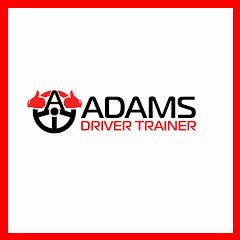
How Do Intensive Driving Courses Differ from Regular Driving Lessons?
Learning to drive is a significant milestone, and choosing the right method to achieve your driving licence can impact how quickly and confidently you reach your goal. At Adams Driver Trainer, we offer both intensive driving courses and regular driving lessons to suit different learning styles and schedules. But how do these approaches differ, and which one might be right for you? Let’s explore the key differences and help you make an informed decision.
What Are Intensive Driving Courses?
Crash courses, also known as intensive driving courses, aim to teach you how to drive in a shorter period of time. These courses typically involve several hours of lessons each day over a few weeks, with the aim of preparing you for your practical test as quickly as possible.
The structured nature of intensive courses means that you’ll have the same instructor and car throughout, allowing for consistent learning. This focused approach is ideal for individuals who need to pass their test quickly, such as for work requirements or personal commitments.
What Are Regular Driving Lessons?
Regular driving lessons are the traditional route for most learners. Typically, you schedule these lessons weekly, each lasting one to two hours. They offer a more gradual learning process, allowing you to absorb knowledge and practice skills over an extended period.
This method is well-suited to learners with busy schedules who may not have the time to commit to a daily or near-daily intensive course. It also provides more flexibility, as you can tailor your learning pace according to your comfort level and availability.
Key Differences Between Intensive Courses and Regular Lessons
-
Pace of Learning
- Intensive Courses: Back-to-back lessons help you build and retain skills quickly. This method is immersive, making it easier to grasp concepts in a shorter timeframe.
- Regular Lessons: These progress at a more measured pace, allowing you to practice between sessions and gain experience over time.
-
Time Commitment
- Intensive Courses: Require significant upfront time investment, often spanning several consecutive days or weeks.
- Regular Lessons: Spread out over months, making them easier to fit into a busy lifestyle.
-
Cost
- Intensive Courses: Usually involve a larger upfront payment but may save money overall if you pass your test quickly.
- Regular Lessons: Costs are spread out over a longer period, which can be more manageable for some learners.
-
Learning Style
- Intensive Courses: Suitable for those who prefer focused, immersive learning and are confident in picking up new skills quickly.
- Regular Lessons: Ideal for learners who benefit from repetition and the opportunity to process information at a steadier pace.
-
Test Readiness
- Intensive Courses: You’ll take your test immediately after completing the course, which means consistent practice right up until the day of the test.
- Regular Lessons: Test readiness is assessed over time, and the test is booked when you and your instructor feel confident.
Is It Better to Learn to Drive in a Manual or Automatic Car?
Another key consideration when learning to drive is the choice between a manual or automatic car for lessons. Both options have their benefits, and the right choice depends on your preferences and future driving needs.
-
Manual Cars:
Driving a manual car will grant you the license to operate both manual and automatic vehicles. While it may take longer to master gear changes and clutch control, many learners feel it’s a worthwhile investment for greater flexibility in car choice. -
Automatic Cars:
If you’re looking for a simpler learning process, an automatic car might be the better option. Automatic vehicles don’t require gear changes or clutch control, allowing you to focus more on road awareness and navigation. This can be particularly beneficial for nervous drivers or those planning to drive in urban areas with heavy traffic.
At Adams Driver Trainer, we offer lessons in both manual and automatic cars, ensuring you have the option to choose the vehicle type that suits your needs and learning preferences.
Which Option Is Right for You?
Choosing between an intensive driving course and regular lessons comes down to your goals, schedule, and learning style. Intensive courses are a fantastic choice if you’re in a hurry to get your licence or thrive in an immersive environment. On the other hand, regular manual driving lessons provide a more relaxed pace, giving you time to build confidence behind the wheel.
When it comes to manual vs automatic cars, consider your long-term needs. If flexibility and cost-saving are priorities, learning in a manual car may be the better choice. However, if simplicity and ease of learning appeal to you, an automatic car is an excellent alternative.
Get Started with Adams Driver Trainer

Whether you opt for an intensive course or regular lessons, Adams Driver Trainer is here to guide you every step of the way. With experienced instructors, tailored teaching methods, and the option to learn in a manual or automatic car, we’ll help you become a safe and confident driver.
Contact us today to book your first lesson or discuss which option might be right for you. Let’s get you on the road to success!













